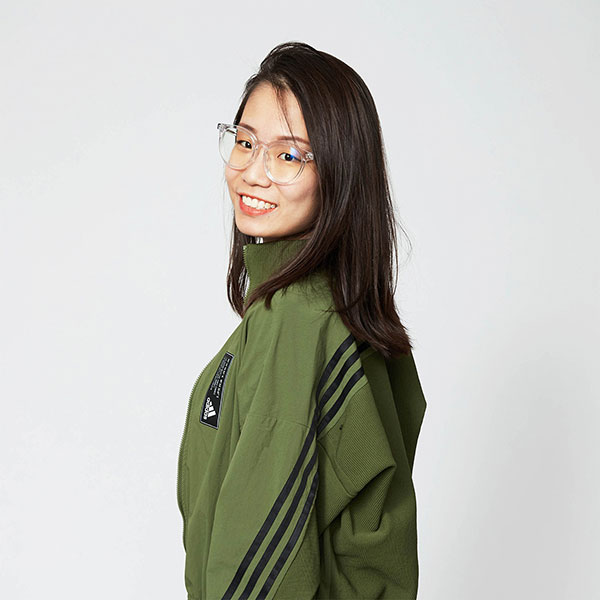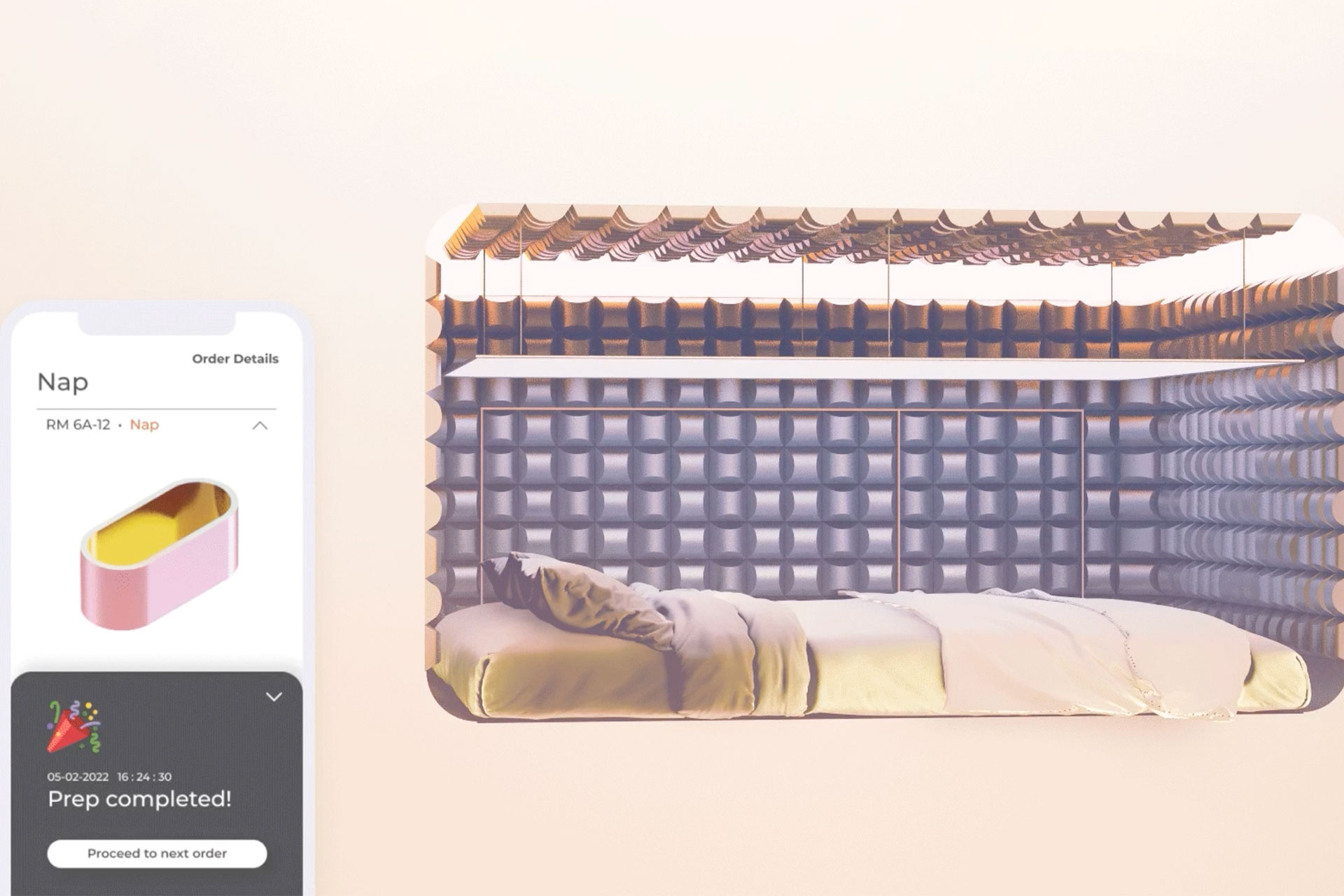Interview with Tiange Wang from United States

Interview with Berenice Riu from Spain
June 15, 2023
Interview with Min Jin Kook from United States
June 15, 2023Interview with the 2023 MUSE Creative Awards Winner - Tiange Wang
I’m a multidisciplinary software designer at IDEO and a creative technologist. At IDEO, I create human-centered and data-driven experiences through UI/UX, web and mobile development, XR prototyping, spatial design and data visualization. I have crafted user-friendly and culturally-sensitive experiences for clients across a variety of industries in North America and Japan.
As a creative technologist, I design for experiences that bridge the physical and digital worlds, including novel physical interfaces, smart homes, educational games, unmanned retail and speculative featuring with extended realities and generative AI.
I enjoy designing for experiential delight as much as bringing them to life, whether it is a digital product, a physical-digital space, an immersive experience, or some combinations of them all. One of the most exciting moments for me as a creative is when people experience, interact with, and react to what I create. Being medium-agnostic has further liberated my ability to bring human-centered design thinking into a wide range of topical interests that have sparked my enthusiasm.
Becoming a creative was something that came naturally since childhood because it perfectly combines my curiosity for the human experience, affinity for creative agency, desire for beauty and mind for problem-solving.
I’m a multidisciplinary software designer at IDEO where I create human-centered and data-driven experiences through UI/UX, web and mobile development, XR prototyping, spatial design and data visualization. I have worked across various industries in North America and Japan, and crafted user-friendly and culturally-sensitive experiences for clients from worldwide trading conglomerate to large biotechnology company to small home care brand.
Prior to IDEO, I was a design consultant to Harvard’s Fairbank Center for Chinese Studies in creating products that provide a seamless and accessible digital transformation experience for the world-renowned research institution, and collaborated with Harvard Innovation Labs in designing a venture around digital wellbeing.
I’m also an independent designer and creative technologist. VLab is my design studio with my creative partner I-Yang Huang dedicated to creating novel experiences and products that sit at the intersection of design and technology. Besides leading VLab outside of my full-time work, I also actively speak about design, technology and careers in conferences and universities, teach workshops and provide mentorship to young designers.
Creativity is the capacity to bring new visions to the table and see old things under a new light. Despite the rise of Generative AI, I believe that creativity is still something unique to the human intelligence as it is often times the outcome of thoughtful speculations, contextual knowledge, deep empathy, good intuition, rich experience, and genuine passion.
It applies to all phases of design, from identifying the problem to coming up with a graceful solution. Although not an equivalence to great designs, creativity certainly plants the seeds for outstanding design solutions.
It really resonate with me when a creative idea and/or design provide solutions that strike a balance between desirability, viability and feasibility; embody simplicity, elegance and beauty; or spark moments of joy with memorable experiential delight.
I always embrace a reciprocal process of divergence and convergence in my creative design process. At the divergence stage, I set out to collect inspirations. These could be from related design work to anything outside the world of design: objects, stories, real-life experiences, etc. It is also very important for me at this stage to learn as much about the subject matter as possible, whether it means finding myself wandering the streets of a foreign neighborhood, conversing with a doctor at an inpatient hospital, observing the dessert-making process in a factory, etc.
At the convergence stage, I use prototyping as a tool to articulate the questions and test my assumptions with potential users, audience, or experts. As the design progresses, these questions might gradually shift from directional and strategy-driven interests to more specific aspects of the interface and experience. Sometimes there are many rounds of divergence and convergence, but each round gets me closer to the optimal creative solutions.
Prototyping. I love the process of turning an idea into something tangible and using technology to make static mock-ups interactive. Prototyping definitely enables this process. It is a way of identifying design goals, forming questions and assumptions, and testing out the designs with different people to gain feedback and move the design forward.
It embraces the mentality of failing fast to move forward faster. From both a functional and experiential standpoint, prototyping stays at the front and center of my creative process, as it has been both incredibly productive and super enjoyable to do.
I like to ground my designs in real-world use cases and elevate them with speculative future scenarios. I also pay a lot of attention to beauty and high visual polish in my work – whether it is a web or mobile app platform, spatial design, visualization or a physical-digital product. I gravitate towards designs that are culturally-sensitive, emotionally-appealing, soft, playful, timeless, provocative, data-driven and technology-enabled.
I enjoy East Asian cultural heritage and American design education and professional career. I draw inspirations and sensitivity from a variety of East Asian cultures - primarily Japan and China. My keen interest in Japanese culture is evident in my work, with traditional motifs and popular culture references often incorporated. One of my recent projects involved transforming data stories into an edible experience using Wagashi, a type of Japanese confectionery.
It is truly an honor to win 2 Gold Awards at the 2023 MUSE Creative Awards. It is very humbling and motivating to receive this award distinction, which further strengthened our commitment to creating deeply thoughtful and beautifully crafted designs that push the boundary of what is possible for the (near) future of experiences.
I entered 2 projects into the professional Experiential & Immersive category and both of them won a Gold award. Project SpaceV is the service and experiential design of a hybrid physical-digital space-vending system as a provocation for the future of holistic wellbeing in the city. Project SinkInSync is a cross-person EEG biofeedback VR experience for augmenting social connectedness in remote interactions.
These 2 projects are very different in terms of their media, technology, topical interests and representation, but they each represent an area of expertise for me as a multidisciplinary designer. They further demonstrate the medium-agnostic approach that I continue to hold dear to my process of creating experience-driven and human-centered design work.
For SpaceV, the greatest challenge was to design how it will operate with as little human interference as possible at its scale and complexity, in order to keep the promise of autonomy and privacy. SpaceV is finely divided for diversified purposes that involves both sales of goods and personal occupancy.
We felt challenged in designing a system for reservation, management, and wayfinding. This problem is specific to this vision and has no direct precedent. It leads us to discover the possibilities of hybrid digital-physical method, bringing together the best of both worlds for a new experience.
For SinkInSync, the biggest challenge was the design of brainwave data mapping to the 3D scene elements - what could a “mindscape” look like, and how to map the frequency and type of the dominant brainwave bands to color, movement and pulsations so that the outcome balances a narrative environment (richness) and a clear, trackable logic of visual-audio stimuli (simplicity). We went through 2 major iterations with multiple smaller sprints to reach the final outcome.
It has been such a great honor! The award exposed me to new ideas, trends and approaches in design by connecting with fellow winners of the award. It has also truly inspired me to continue pushing the boundaries of my design practice and creating more and better works.
Creativity, Human-centeredness, Tangibility. Human-centeredness helps turn creativity into great designs, and tangibility helps bring the great designs to life.
As a designer who is passionate about launching real products and use cases of ideas, an important uniqueness is the size and diversity of the market. This could lead to the development of a robust and dynamic creative industry with ideas being turned into products that serve dozens millions of people.
In addition, there is a rich repository of cultural heritage to serve as inspiration for design. To some it is about employing specific motifs or narratives with a contemporary twist, and to others it might be about a broader East Asian sensitivity and ambience that accomplish the beauty in the design.
I’m really excited about the increasing presence of Generative AI and automation in the creative industry - how new interaction paradigms will emerge as a result of AI-powered software and how new frameworks for AI-enabled design/creative processes will take shape.
I also think the creative industry will continue evolving towards sustainability and social responsibility. As consumers become more aware of the impact of their choices on the environment and society, companies are likely to focus more on creating sustainable and socially responsible products and campaigns.
Additionally, there will be a growing emphasis on collaboration and interdisciplinary work in the creative industry as projects become more complex and diverse.
Submitting for the MUSE Creative Awards is a great chance to share your work to a larger global audience and gain helpful feedback and validation for your work - take it as an opportunity to curate your presentation and storytelling in a way that not only speaks to the award but also potential future clients and audiences.
Gain hands-on professional experience as early as possible. Maintain a stream of side projects that represent your interests and skillsets. Find great collaborators and acquire new skills through accomplishing projects together.
My inspirational north stars change from time to time, most recently- Kenya Hara, Giorgia Lupi, Jony Ive, and Arashi. And of course, the talented teams at IDEO.
Collaboration is never overrated. Be generous to take the extra miles to make something great happen.
Winning Entry
Space V : A Space-Vending System for Everyday Wellbeing | 2023
(read more at MUSE Creative Awards)
Tiange Wang
Tiange Wang operates her very own design studio, VLAB, with her creative partner, I-Yang Huang to create novel experiences and products that sits at the intersection of design and technology!
Read more about this interview with Craig Wong from the United States, the Platinum Winner of the 2023 MUSE Creative Awards.


